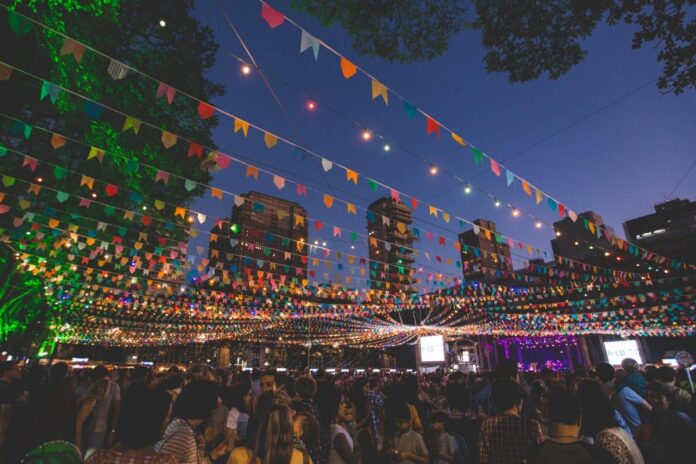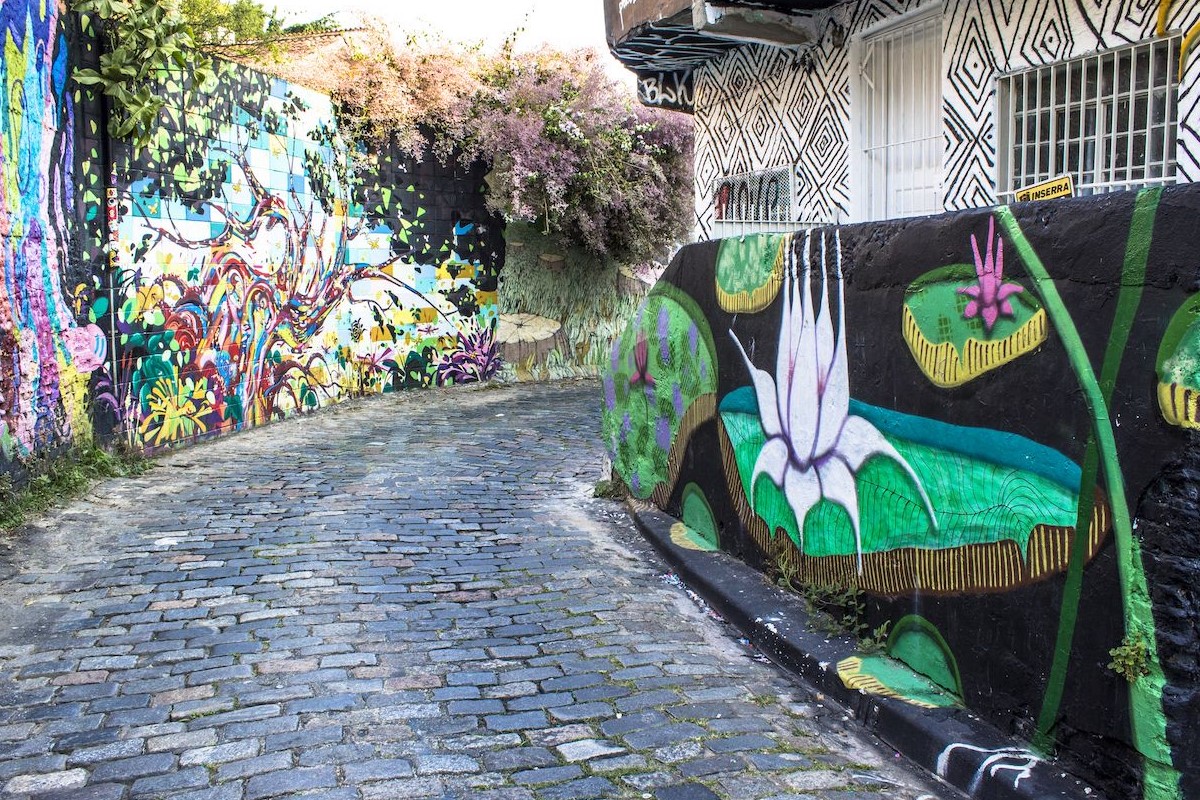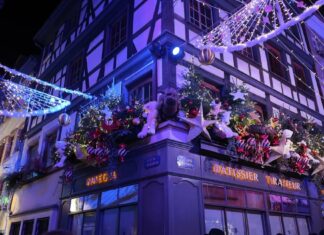
Barra Funda in São Paulo has been named the 3rd coolest neighborhood in the world by Time Out in 2025.
The area is alive with old warehouses now hosting art shows and live music. Bars stay open late, food stands stay busy, and people pack the sidewalks every night.
Being ranked this high puts this part of São Paulo on the map in a new way. Let’s take a closer look at parts of Barra Funda that prove its spot.
What Makes Barra Funda Different?
The neighborhood has grown into a hub for art, food, and music, all set against the backdrop of concrete blocks, train lines, and the elevated expressway that cuts through it.
Food and Drink
View this post on Instagram
- Komah brings modern Korean flavors into São Paulo’s dining scene and has drawn national praise.
- Mescla is a small restaurant focused on seasonal menus that feel both local and fresh.
- Água e Biscoito opened with a strong menu and a soundtrack that turned it into a neighborhood hangout.
- Mamãe Bar pours cocktails with no pretense, a spot where people return night after night.
Art and Culture

- Mendes Wood DM moved major exhibitions into Barra Funda, making the area a magnet for collectors and curators.
- Smaller studios and project spaces run shows and workshops in old industrial rooms.
- Murals and street art cover walls across the neighborhood, giving the streets their own gallery.
Nightlife
- Warehouses now host parties and concerts that run late into the night.
- Cocktail bars, queer bars, and low-key dives give the neighborhood variety.
- Music flows from small stages tucked inside basements and back rooms.
Public Space

- The Minhocão, the elevated highway that cuts through the neighborhood, has become a landmark. It is harsh, loud, and unmistakable, but it gives the neighborhood its edge.
- Empty rail lots and open grounds often become markets, art fairs, or event spaces.
A Day in Barra Funda
Start the morning under the Minhocão, the massive overpass that runs right through Barra Funda. It is loud with traffic during the week, but on Sundays the city closes it to cars and people walk, bike, and skate across it.
It sets the mood right away. You are in a neighborhood that makes space out of whatever it has.
From there, step into Mendes Wood DM, one of the most respected galleries in Brazil. Inside the old warehouse walls, you find installations and shows that draw collectors from across the world. It is a sharp contrast to the streets outside, and that clash is part of what makes Barra Funda stand out.
When it is time to eat, Mescla gives you a seasonal menu in an intimate space, while Komah serves modern Korean food that has become a city favorite. Both draw steady crowds, so expect a wait, but the food is worth it.
At night, Barra Funda changes. Warehouses that sat silent during the day turn into clubs and music halls, some with DJs, others with live bands.
If you want a smaller stop, Mamãe Bar is the kind of place where regulars greet each other and new visitors feel welcome after the first round.
Botafogo in Rio de Janeiro Also Made the List of the Coolest in the World
Botafogo landed at number 29 on the Time Out list of coolest neighborhoods, and its spot is well earned.
Walk the streets, and the energy of Rio comes through in every corner.
By day, Botafogo feels relaxed.
Cafés like The Slow Bakery keep sourdough lovers happy, and Cirandaia sets the tone for long brunches that show off the easy pace of Rio de Janeiro mornings.
Contemporary art stays close with small galleries such as Athena and Cavalo, while old garages now turned into creative hubs prove how the neighborhood continues to reinvent itself.
When evening arrives, Botafogo shifts gears. Sidewalks turn into gathering spots as people move between Botica, Tero, and Chanchada, bars that keep music and conversation running late.
Dinner might mean Brazilian cuisine with a modern touch at places like Miam Miam, Ferro e Farinha, or a night at Michelin-starred kitchens such as Lasai and Oteque.
Botafogo thrives on contrast: simple comforts, refined dining, and a nightlife that spills onto the streets, capturing the spirit of Rio de Janeiro in a way few neighborhoods can.
Check Out the Full List of Coolest Neighborhoods Around the World
- Jimbōchō, Tokyo
- Borgerhout, Antwerp
- Barra Funda, São Paulo
- Camberwell, London
- Avondale, Chicago
- Mullae-dong, Seoul
- Ménilmontant, Paris
- Nakatsu, Osaka
- Vallila, Helsinki
- Labone, Accra
- Nguyen Thai Binh, Ho Chi Minh City
- Anjos, Lisbon
- Digbeth, Birmingham
- Red Hook, New York
- Perpetuo Socorro, Medellín
- Burwood, Sydney
- Linden, Johannesburg
- Former French Concession, Shanghai
- Quartieri Spagnoli, Naples
- Bencoolen, Singapore
- Endoume, Marseille
- Plateau-Mont-Royal, Montréal
- The Liberties, Dublin
- North Melbourne, Melbourne
- Portales, Mexico City
- Davenport, Toronto
- Little River, Miami
- Kemang, Jakarta
- Botafogo, Rio de Janeiro
- Sheung Wan, Hong Kong
- Barranco, Lima
- Mont Kiara, Kuala Lumpur
- Clarksville, Austin
- Margit-negyed, Budapest
- Glen Park, San Francisco
- MiZa, Abu Dhabi
- Villa Devoto, Buenos Aires
- Mehrauli, Delhi
- Poblacion, Metro Manila
















